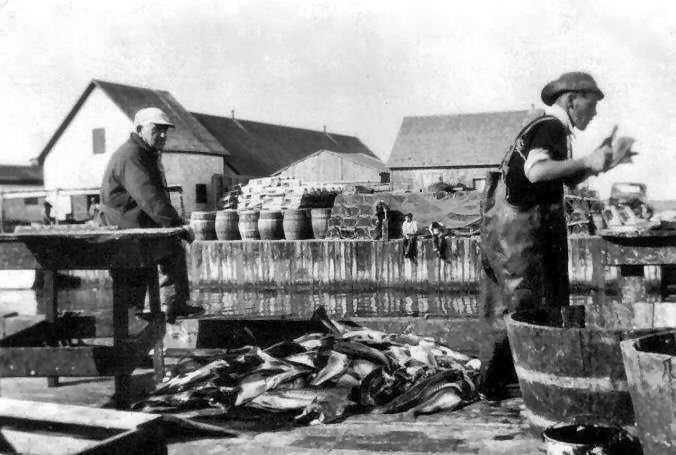
The commercial fishing industry in Tignish in northwestern Prince Edward Island began in 1845 when Frank Arsenault and Thomas J. Caie set up multiple stores in the Tignish district and began to trade with locals. Within a decade, Tignish was exporting more fish products than any other port on the whole island.
In a system not unusual to resource-based economic settlements, Tignish fishermen in the early 20th century were significantly exploited. Most of them didn’t own their own boats or gears and were forced to half-line to cover equipment rentals, giving half of their catch to the company. The company also owned the local store, which strung the fishermen along on company-controlled credit. The result, after years of hard work and organizing, was the first fishermen’s union in Canada.
In 1925 some of the members of the Tignish Fishermen’s Union bought a small lobster factory and six boats to form a joint-stock company, which was incorporated as the Tignish Fisheries Ltd. This put the control of purchasing equipment, processing and marketing their catch in the hands of the fishermen themselves.
Indeed when we returned to the harbour with over 800 lbs of lobster, it was fellow fishermen who knew Henry by name that met us at the dock to receive the catch. They joked and shouted and worked efficiently and although I don’t really know their connection to the history of the Tignish Fishermen’s Union, I could tell I was witnessing relationships built on decades of cooperation and mutual aid.
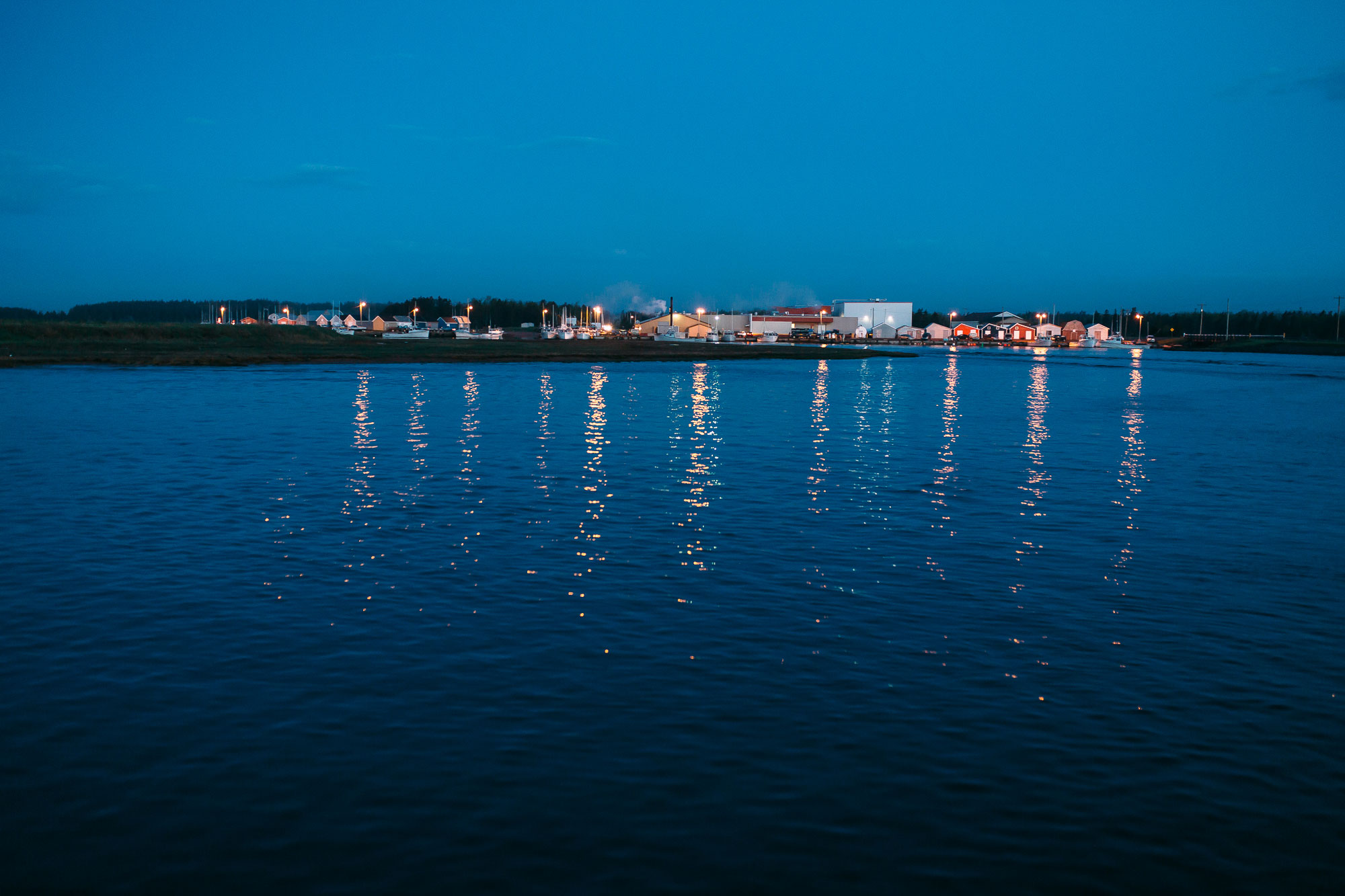

I started the introduction in 1845 and then ended at mid-afternoon on June 2, so the story demands a slight rewind. Days before our arrival in Tignish, we stayed with friends of Asad’s outside of Charlottetown. When they heard we were headed up to North Cape they put us in contact with the Doucette family in Tignish, who welcomed us with warmth and a place to hang our wet gear in the late-afternoon sun.
Henry, the father, was the resident fisherman and skipper of the boat ‘Risky Stuff’ that had once belonged to his father. Anne, the mother, was an education assistant in a local school. Simon, in his mid-twenties, was their son and had fished with his father for the better part of a decade. Adele, from New Brunswick, was Simon’s girlfriend and was also working on the boat as an alternative to the hard-knock tree planting gig she’d worked the previous summer.
When Henry came home, Asad didn’t waste any time. With hopeful conviviality, he asked: “What can we say to convince you to take us on the fishing boat?”
Henry’s major concern was seasickness. It makes for a long day if there’s someone on board throwing up. He checked the weather and saw that the winds were expected to be calm, made sure we understood that even if we were sick we would not be going back to the harbour, and told us we were welcome to come along.
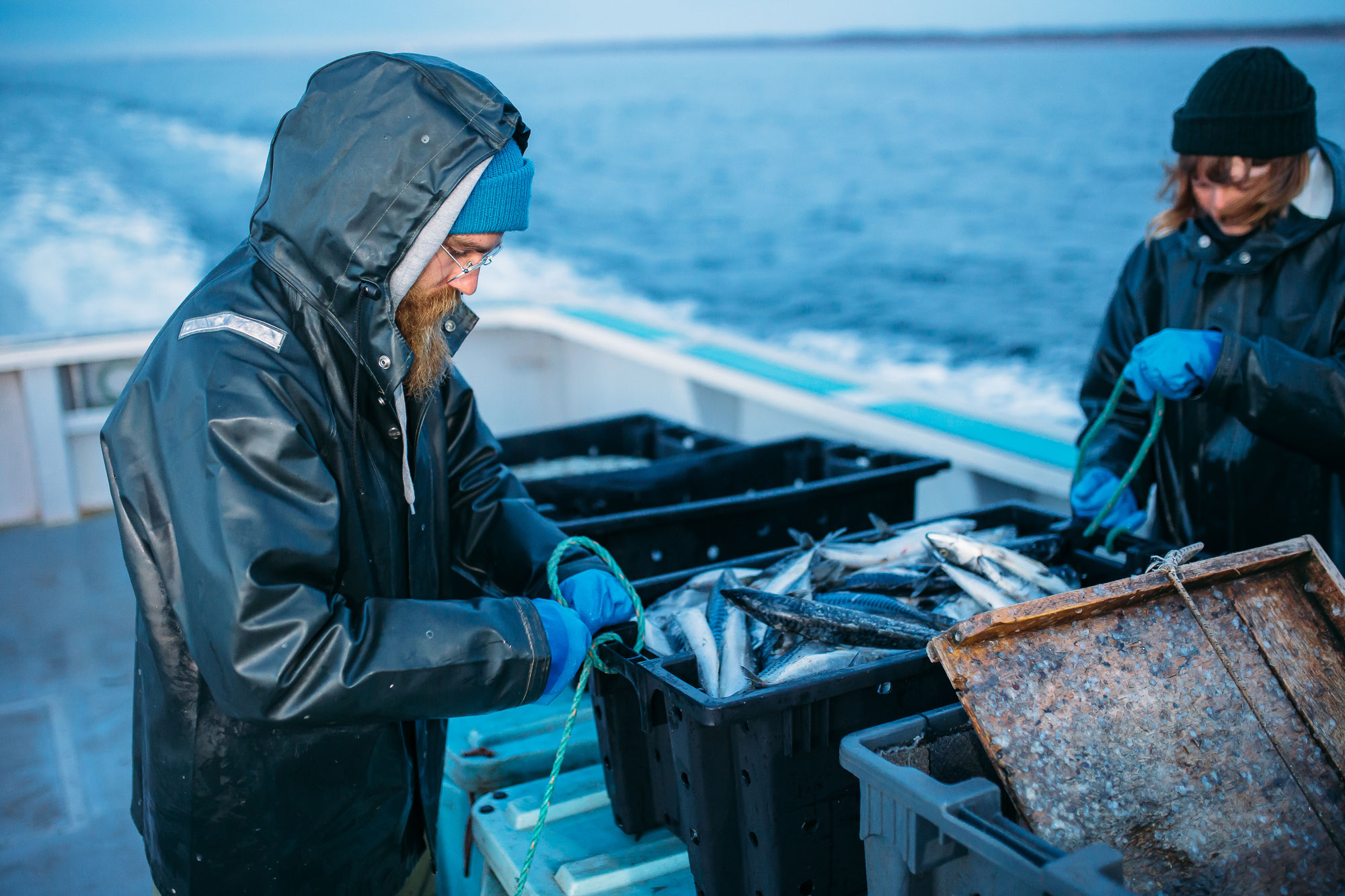
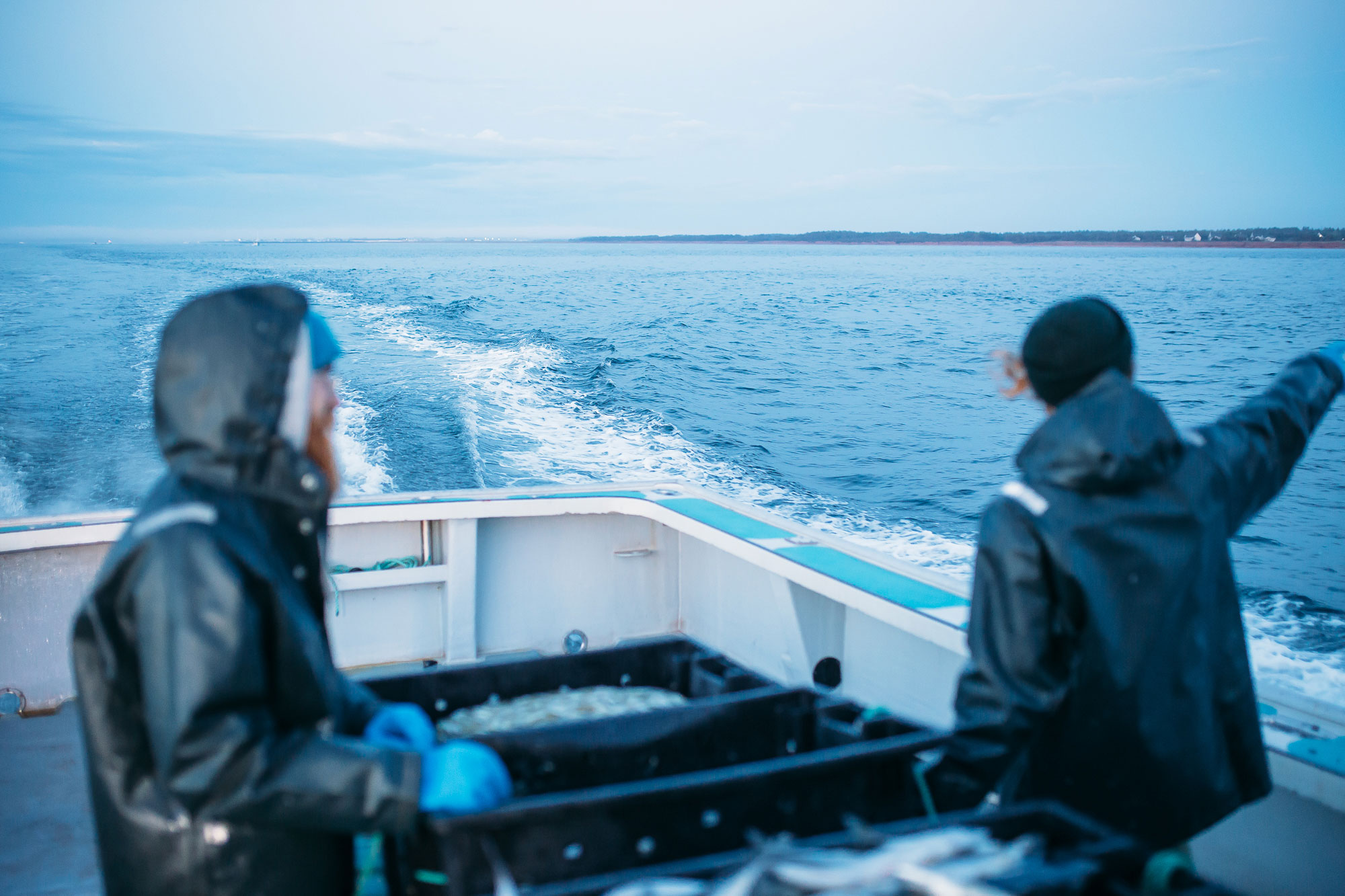
At this point my photos are getting ahead of the story, so I’ll quickly say that we woke up at 4 AM, drove a short distance to the coast as the fog lifted off the farm fields, and the minute we stepped onto the boat, Simon lifted the lines and Henry drove us into open water.
The harbour was lit with streetlights in the dark blue of the dawn. Other fishermen arrived and departed along with us, dispersing to their gears along the coast west of Tignish. The sky grew lighter as gannets swirled above us and as Simon and Adele prepared the bait, securing the bins in the centre of the boat. In the brisk ocean air, I was glad we had been given warm clothing and a waterproof outer layer. It was plastic or DWR but was still called oilskin, a small remnant of a hundreds- or thousands-year-old history.
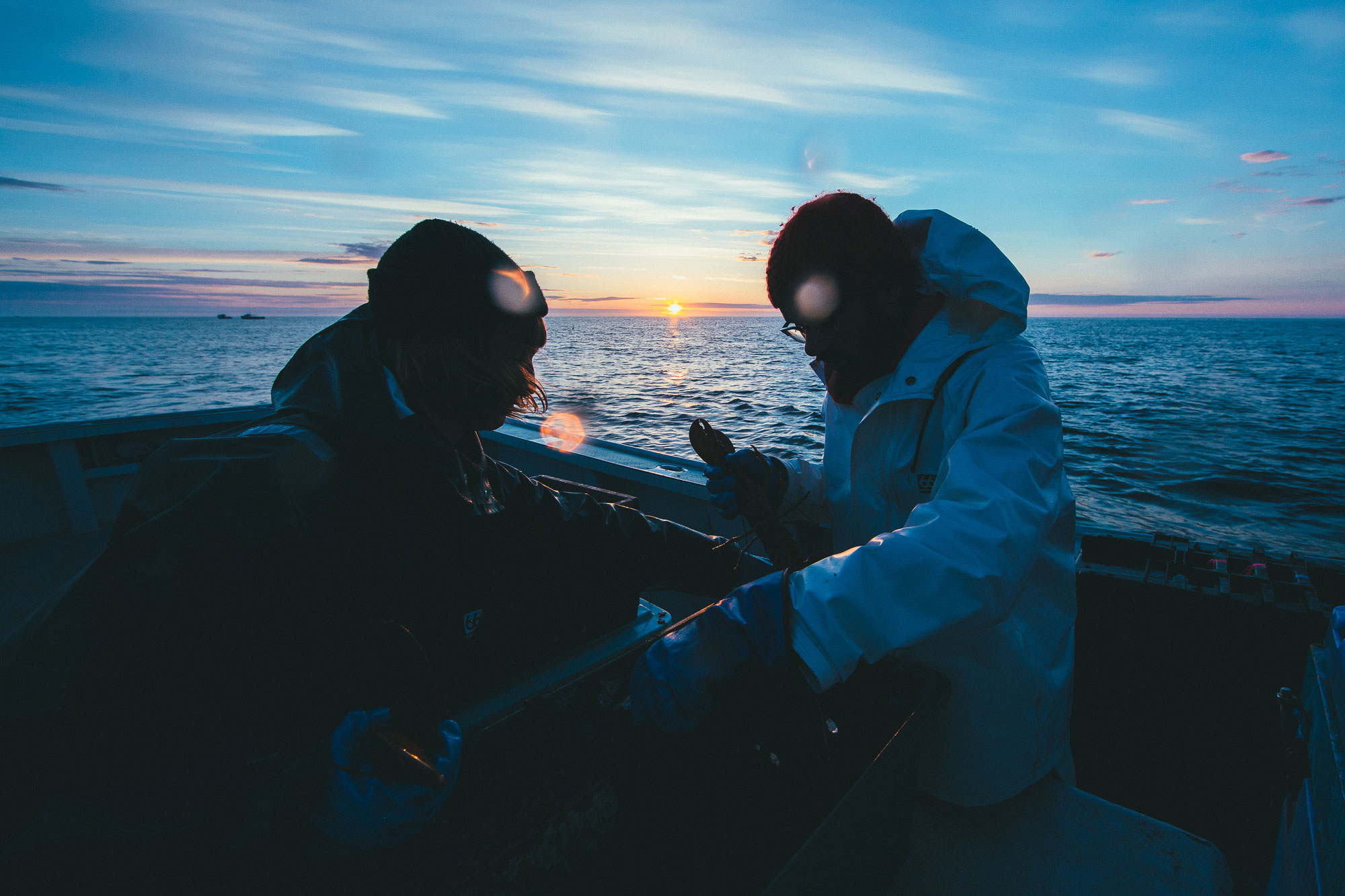
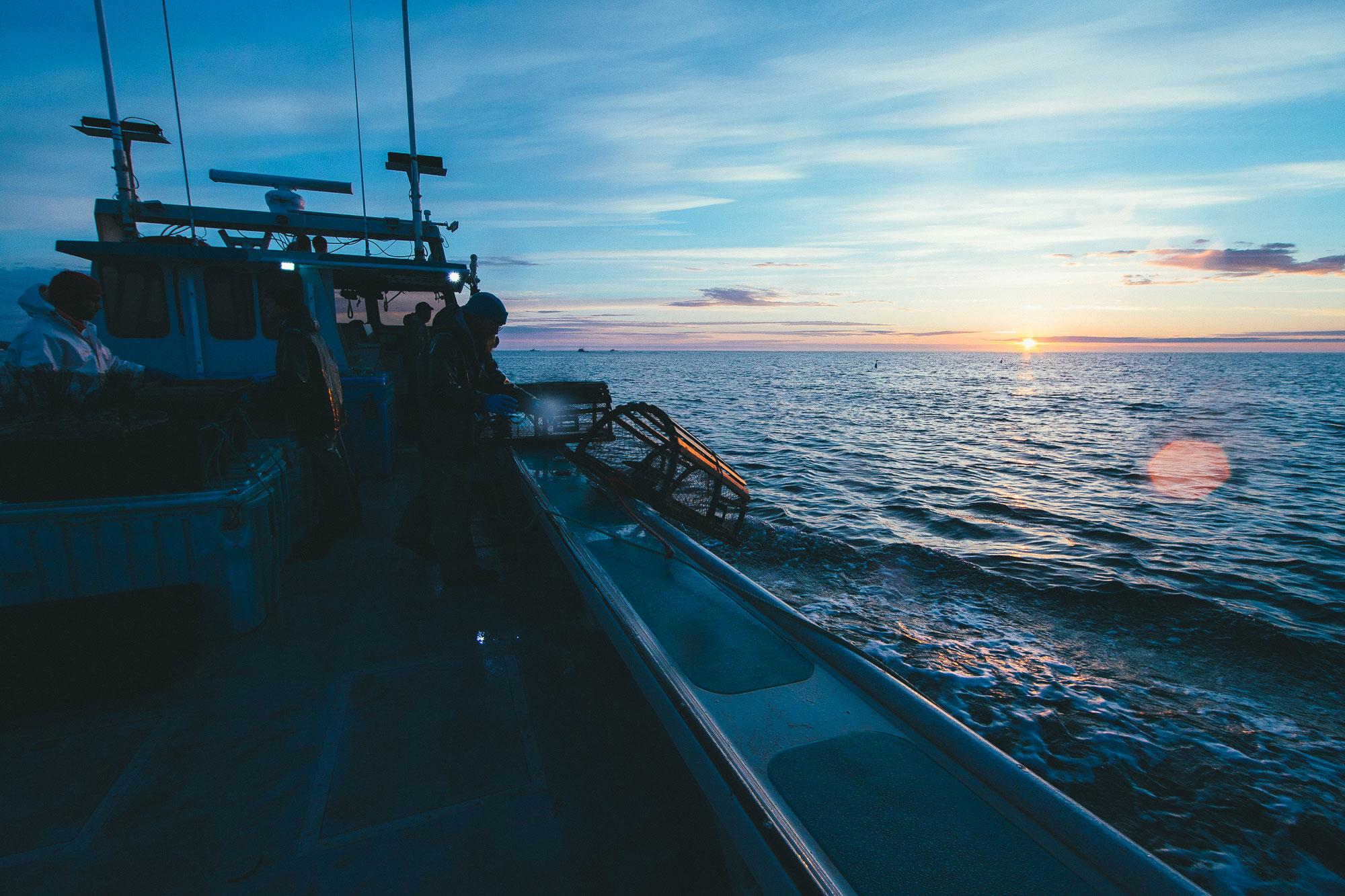
The sun rose, as it always does, and as it broke over the horizon the air changed from blue to red. Our faces glowed orange in the light of the sun. The ocean, however, stayed dark blue all around us.
“I figured out the secret to sea legs,” I told Adele as the boat rocked over the waves. “Always be leaning against something.”
She laughed. “I sit pretty much whenever possible.”
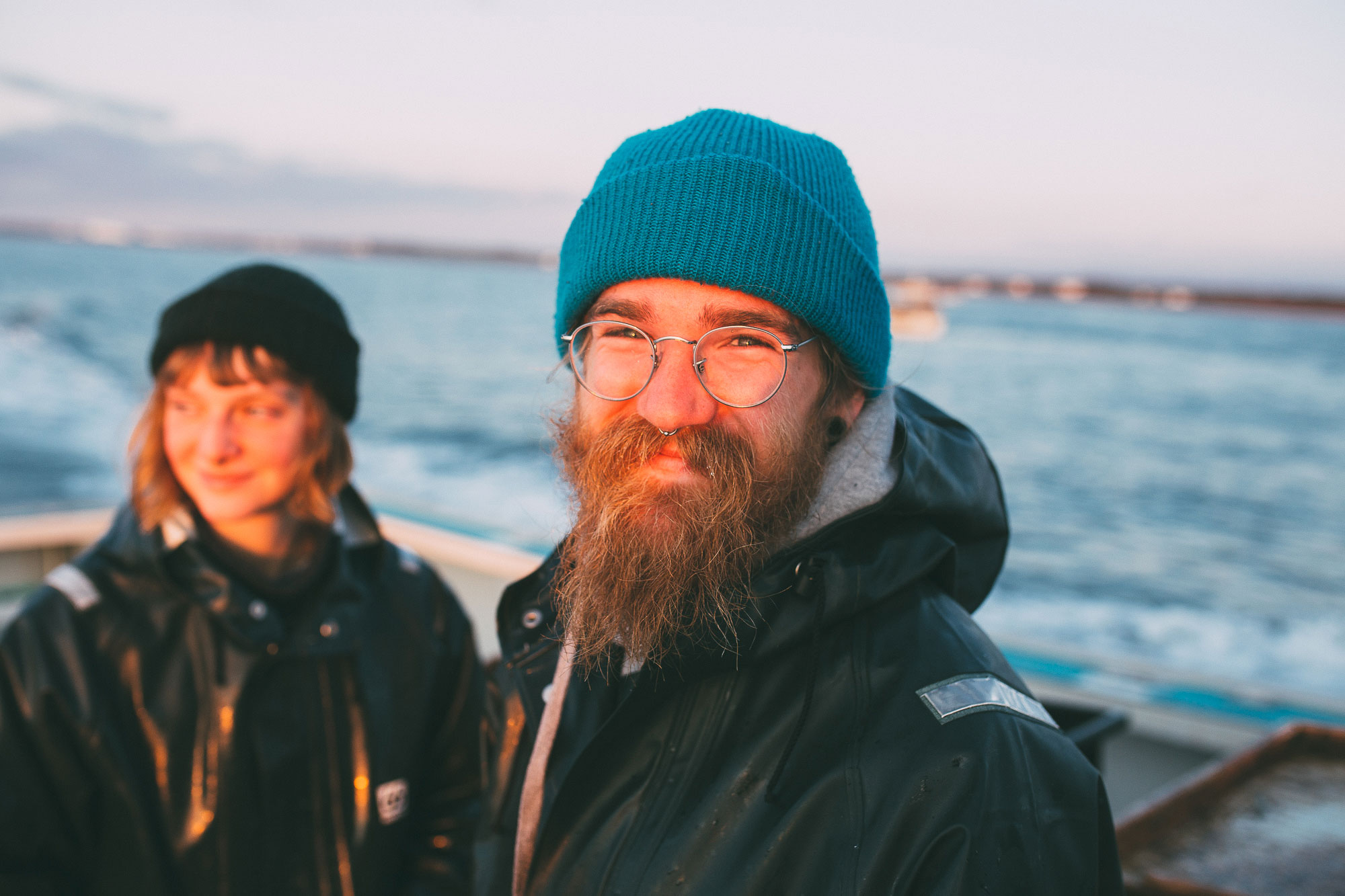
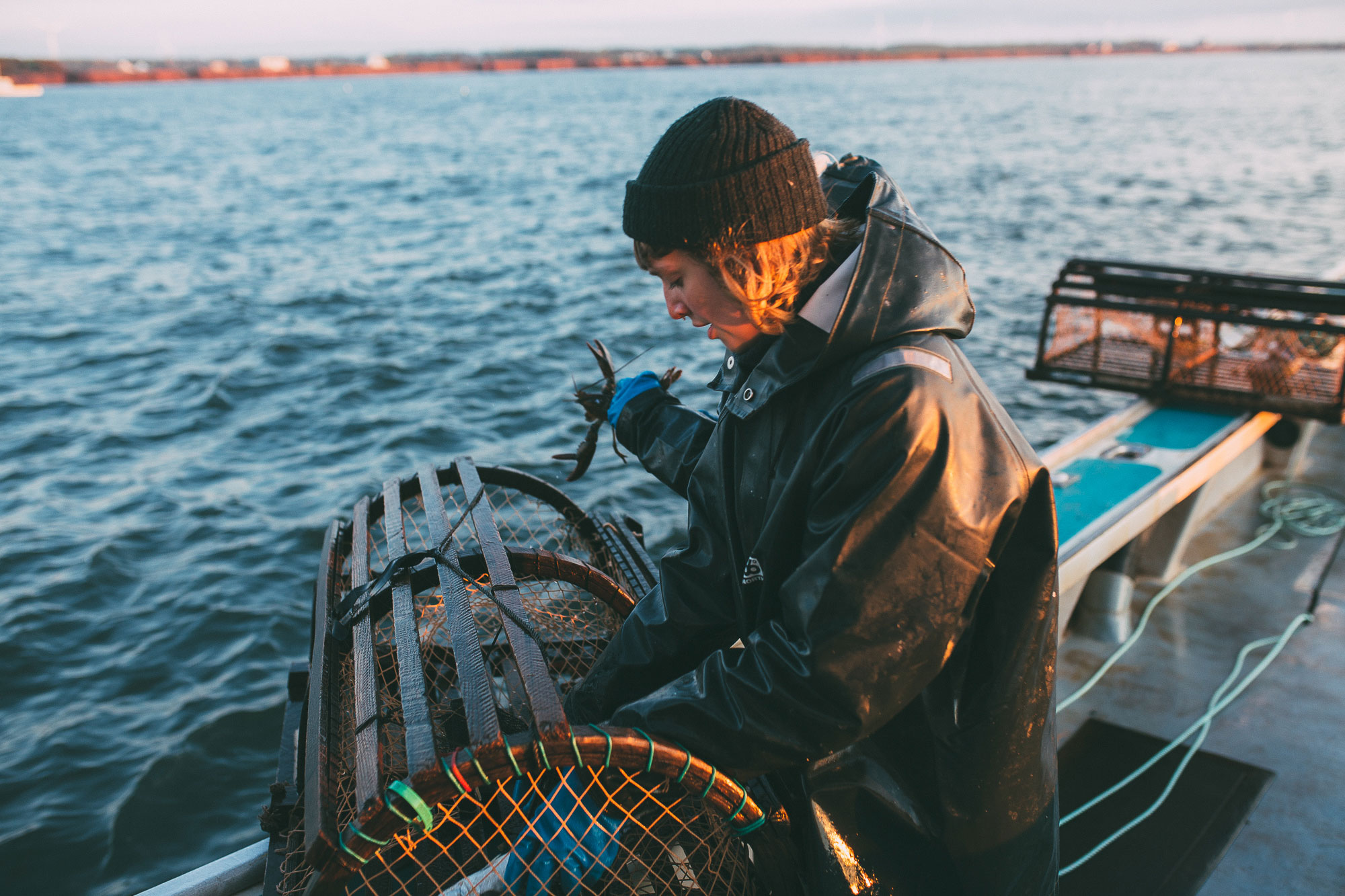
The fishing itself worked like this. Henry had 60 trap bunches. Each bunch had five traps, connected with a rope between two buoys. In total that made for 120 buoys and 300 traps.
This sounds like the lead-up to a high-school math problem.
He had the traps mapped out for the day. From what I could tell the coordinates were saved through GPS but he didn’t really refer to them as much as he did his own memory and experience. We went from one bunch to the next. At each stop, Henry would angle the boat against the buoy, Simon would catch it and pull it up to the deck, where the rope would be attached to a winch that would start hauling up the traps. With each trap, Simon would open it, measure the lobsters and throw away the smallest (not enough meat) and biggest (highly reproductive mothers). Adele would replace the bait and clean any live fish to be used in future traps.
Once all the traps were lined up on the washboard, they’d be dropped, along with their buoys, back into the water. There’s market lobster (the bigger ones) and canner lobster (the smaller ones). Each full bin gets stowed away into the hull of the boat, along with some ice to keep them alive and well.

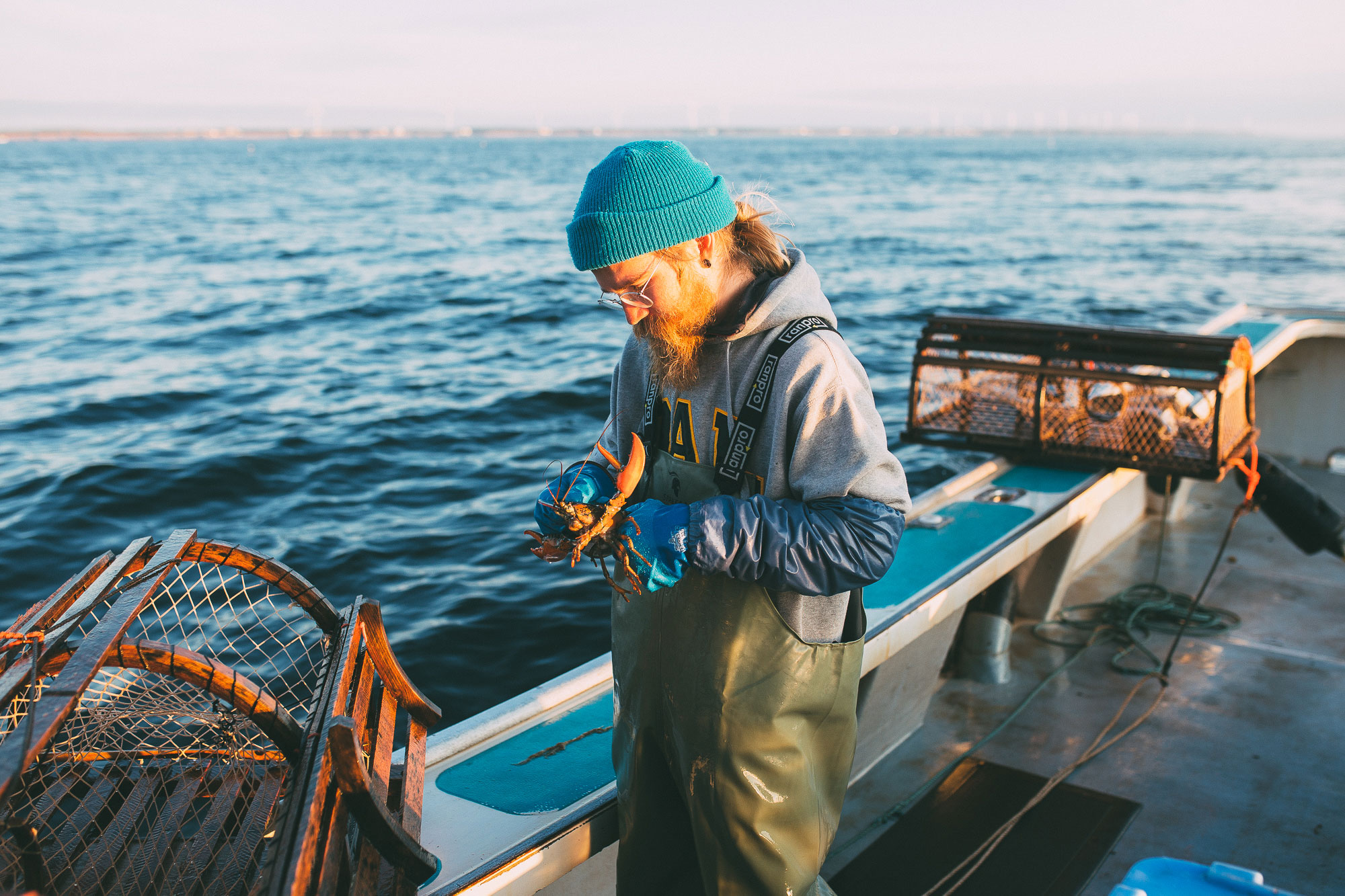
The market lobsters get banded to keep their claws shut. Simon showed me that each elastic has a code printed on it. “If you put that code onto the website there, you can log in and find information about the fisherman who caught your lobster.” Every fisherman in Prince Edward Island is certified as sustainable by the Marine Stewardship Council, the result of fisherman, processors and First Nations working together to manage the fishery and its impact on the marine ecosystem. The industry provides more than 5,000 jobs on the island.
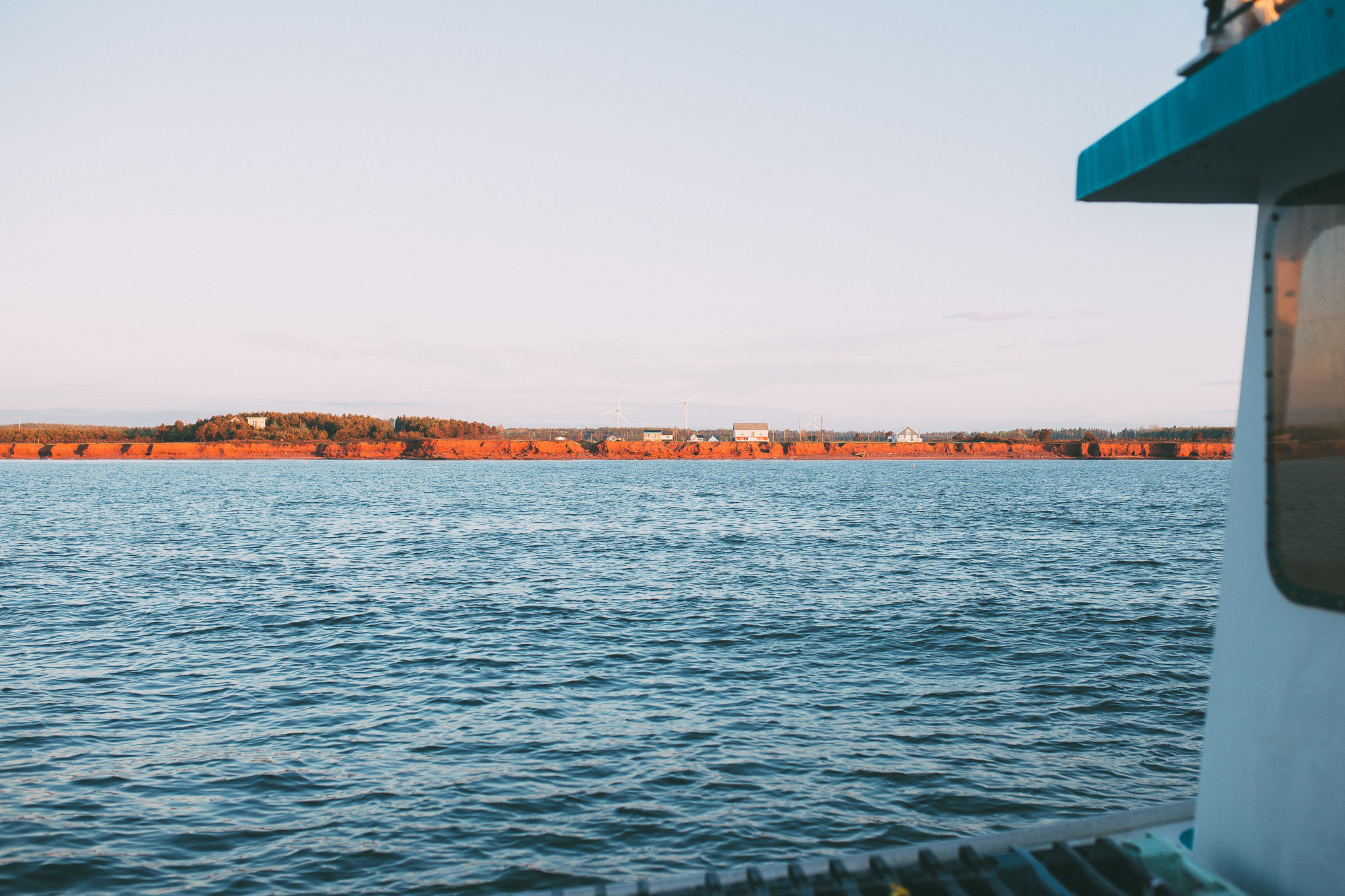

When Henry was 14, his dad gave him the option to buy his fishing boat and equipment, otherwise it was going to be sold to the provincial government. Henry dropped out of school and started fishing. At age 16, he became the captain of his own ship. At this point he’s been fishing commercially for almost five decades.
When I was looking up information about the sustainable fishing industry in Prince Edward Island, I found media coverage of a long legal battle between Henry and the Department of Fisheries and Oceans. In brief, he was illegally misled by the DFO in Moncton and had his New Brunswick crab fishing license frozen, then revoked. From what I understand, the Moncton DFO wanted to make an example of a PEI fisherman. Henry never talked about it, so I’m not going to dwell on it. I just want to acknowledge that within this story of salt water and lobster sandwiches, fisherman sayings and love that wakes up at 4 AM; there’s a story of injustice.
Few things are as simple as they appear to be. When I read about the exploitation of the rural fishermen in Tignish in the early 1900s, I contextualized it firmly in a past century. Henry’s experience is a stark reminder that injustice exists today.
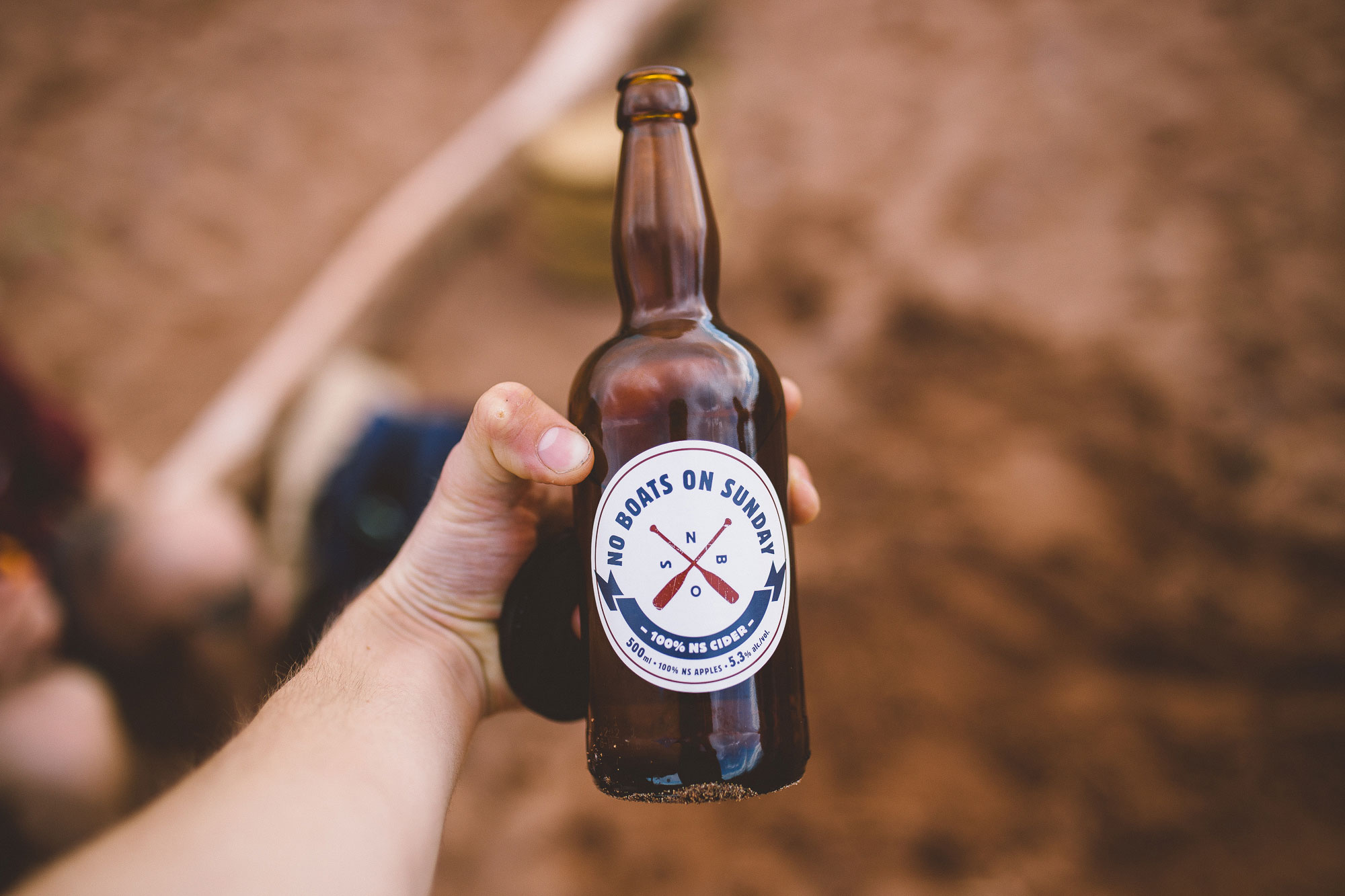
This story goes from blue to orange, from the pre-dawn light of the harbour to the vast sunlit beach of the post-thunderstorm afternoon. From mainland to the coastal ocean to mainland again. Along the way we gathered over 800 lbs of lobsters and a good story to tell.
Ever since Newfoundland, and especially since Cape Breton, I had wanted to better understand the lives of the thousands of fishermen who shaped and continue to shape the culture of Atlantic Canada. It was everything I probably expected in an honest day’s work, a mixture of pride and the exhaustion. But I think I hadn’t foreseen the clarity that salt water brings. The morning sun was as bright as it was distant and the waves rocked under my feet; I felt lobsters’ muscles moving underneath their exoskeleton and breathed air cut by the wings of diving seabirds. I wasn’t really a fisherman, but for eleven hours I played the part, and I won’t soon forget it.
Archival photo from the Island Narratives Program.